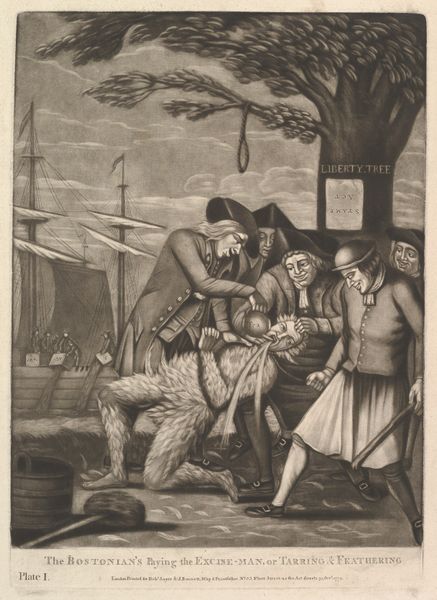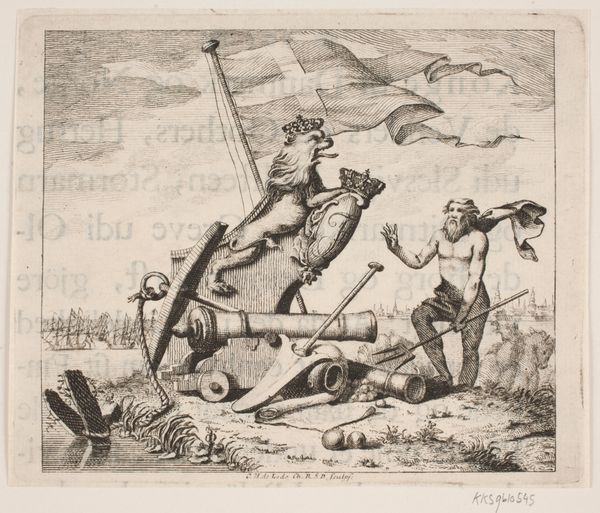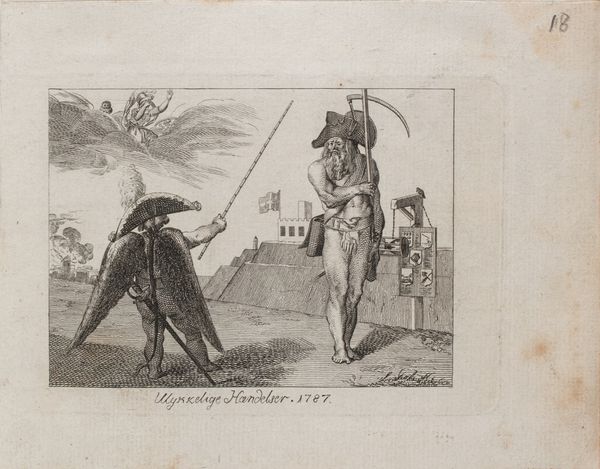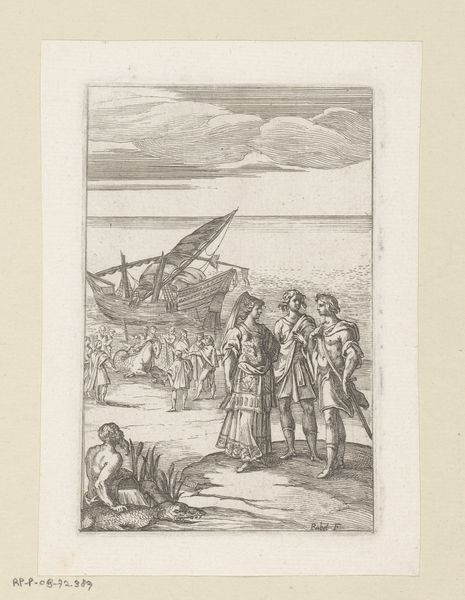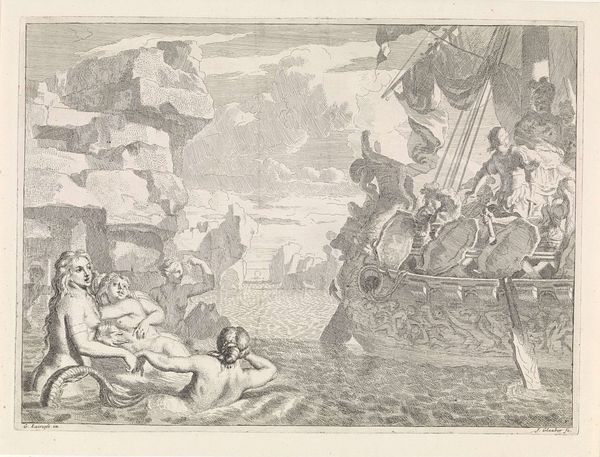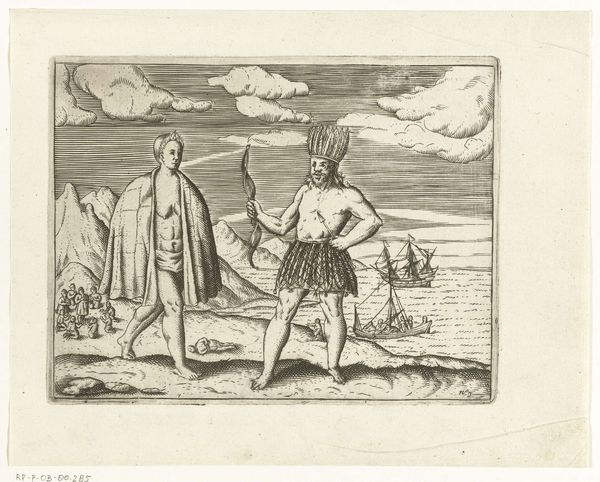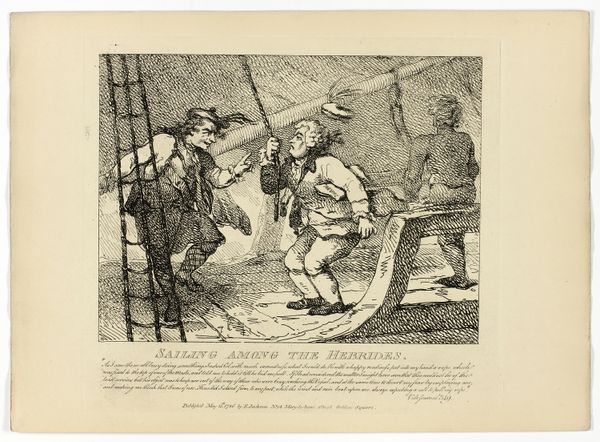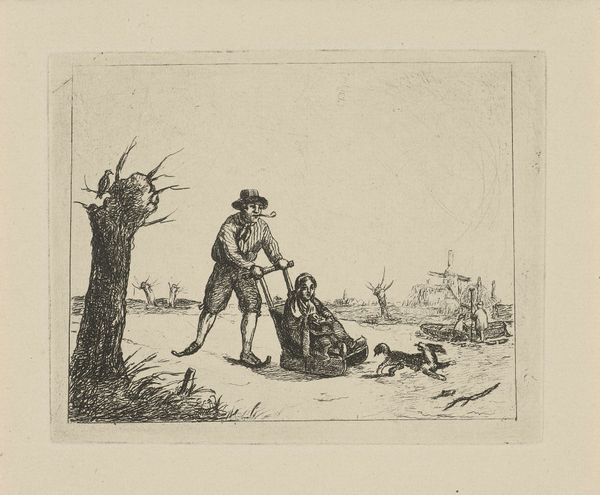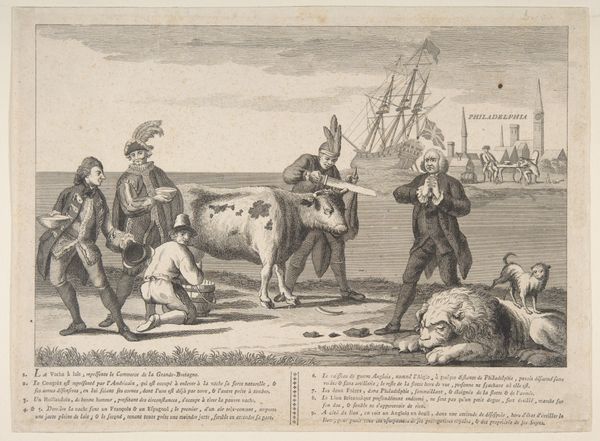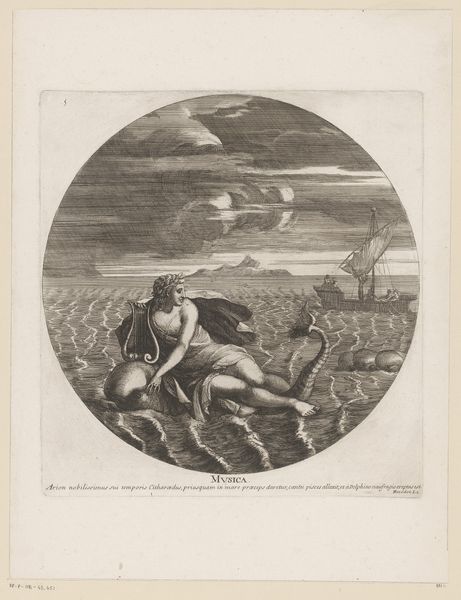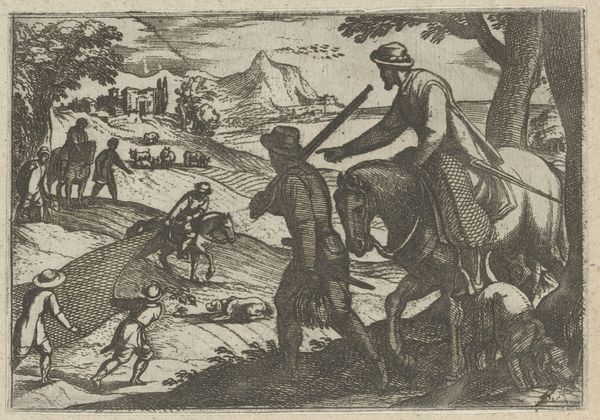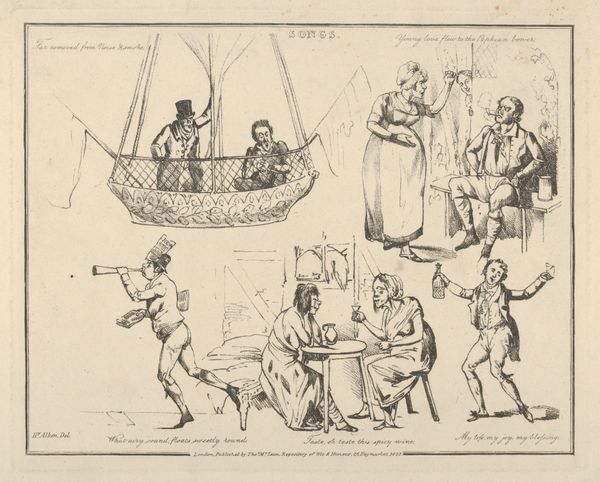
Dimensions: plate: 9 5/8 x 13 13/16 in. (24.4 x 35.1 cm) sheet: 11 x 16 15/16 in. (28 x 43 cm)
Copyright: Public Domain
Curator: Thomas Colley’s "War of Posts," an engraving from 1782, offers a striking, if gruesome, commentary on the state of Great Britain. Editor: Gruesome is right. The overall impression is definitely unsettling. There's this fragmented female figure chained to a rock...the lines are crisp, but the content, quite disturbing. Curator: It's a visual representation of Britain's losses in the American Revolutionary War. The female figure, Britannia, is dismembered. Each severed limb is labeled with the name of a lost colony: New England, Philadelphia, Boston. Editor: Notice the rock to which she's chained and how the chain leads our eye to a discarded shield bearing the Union Jack. Also how the artist juxtaposes the smooth, almost classical curves of Britannia's torso against the jagged rock and rough texture of the chain. The formal contrasts amplify the feeling of violence and disruption. Curator: Indeed. And on the other side, we see a figure thought to be a Dutch merchant, symbolizing the Dutch Republic's growing influence as Britain's power waned. This piece reflects the anxieties and resentments circulating within Britain at the time. The public's perception of the war's mismanagement played a significant role in shaping the political landscape. Editor: It's interesting to see how the artist uses light and shadow. The stark contrast draws attention to Britannia’s vulnerability. This isn’t just about political commentary, but also evokes an emotional response—a feeling of loss and betrayal. The lines are not simply descriptive but evocative. Curator: I agree. Colley uses visual language to express a powerful anti-war sentiment, criticizing the British government's policies and the devastating impact of the conflict on the nation’s global standing. The print was produced for a mass audience during an era of intense political debate. Editor: Thinking about it, Colley uses classic, romantic techniques – dramatic lighting, a tragic central figure—to communicate political satire. I didn't think that was possible. Curator: Ultimately, "War of Posts" isn't just a historical document; it is a potent visualization of political and social anxieties in a time of great upheaval. Editor: Right. And formally, the sharp contrasts and fragmentation mirror the shattering of the British empire and offer emotional texture beyond simple reportage.
Comments
No comments
Be the first to comment and join the conversation on the ultimate creative platform.
